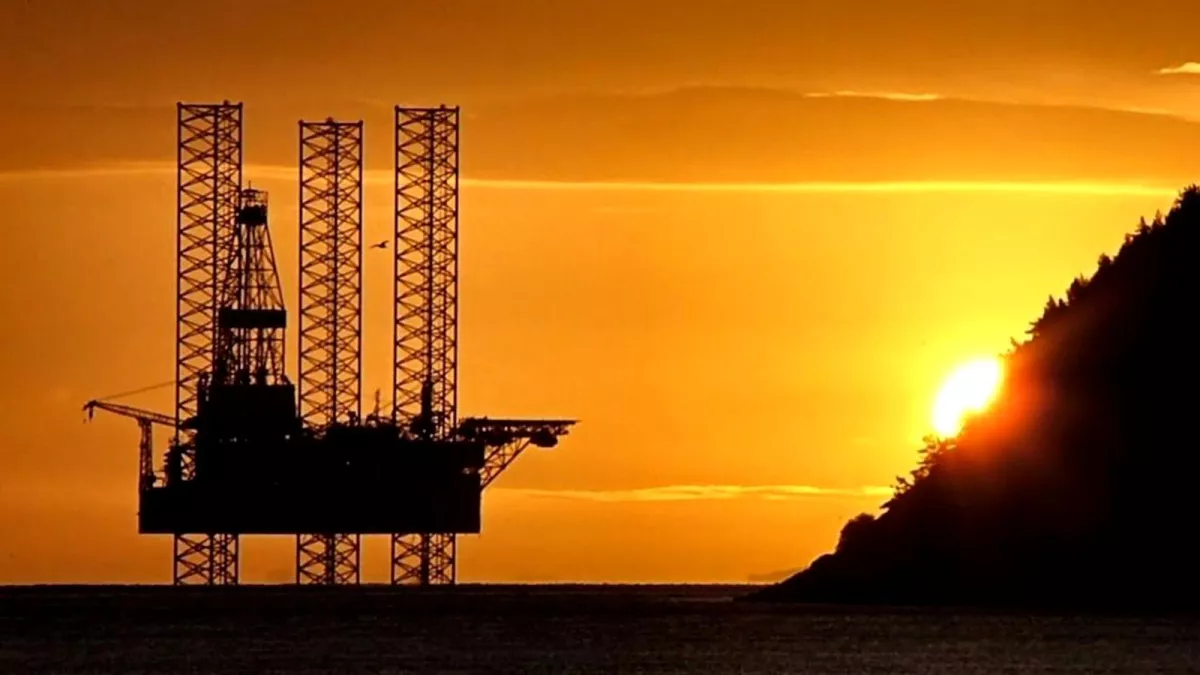Focus on extraction: SOCAR diversifies international assets Caliber.Az review
The development of the Azeri-Chirag-Gunashli (ACG) oil fields, which began nearly thirty years ago, along with subsequent contracts for the exploration and development of oil and gas fields, laid the foundation for Azerbaijan’s long-term industry strategy. Capital-intensive projects in the upstream sector continue to be implemented in the country’s energy sector today. These projects include efforts to increase the efficiency of the extraction industry as well as initiatives aimed at decarbonization and the energy transition.
Recently, the State Oil Company of Azerbaijan (SOCAR) has expanded its involvement in hydrocarbon extraction projects at the international level. Achievements and future plans in this area were discussed at the IADC Drilling Caspian 2025 conference, held on February 6 in Baku.
According to the report "From Vision to Value: 30 Years of ACG," published in September last year by BP (the operator of the AIOC consortium), the total investment in the development of the ACG block reached $45 billion by the end of the first half of 2024. The total production amounted to approximately 4.4 billion barrels of oil, and over 221 billion cubic meters of associated gas have also been extracted from ACG. Work on the development of ACG reserves is successfully ongoing, and experts estimate that there are at least 500 million tons of untapped oil reserves in the field.
The Production Sharing Agreement (PSA) for the joint development and distribution of production at ACG, initially set for 30 years, was updated on September 14, 2017. As a result, the government of Azerbaijan and the consortium partners extended the joint development of the ACG field until 2050. Specifically, in 2019, under the Second Contract of the Century, the implementation of the fifth phase was authorized, including the development of the ACG segment—“Azeri Central-East” (ACE), with a total project cost of $6 billion. It is expected that over 300 million barrels will be produced during the entire project implementation period.
"Last year, 18 wells were planned to be drilled at the ACG field block, but we finished the year with 19 wells," stated Russell Morris, BP’s Vice President for Wells in the Azerbaijan-Georgia-Türkiye (AGT) region, at the IADC Drilling Caspian 2025 conference in Baku. "This year, 19 more wells are also planned to be drilled at ACG." According to him, BP-Azerbaijan has already begun drilling a new production well from the ACE platform: "In 2024, three production wells were drilled from the ACE platform, and work on the fourth has now started. By the end of the year, we expect to drill the eighth well." Morris also mentioned that BP plans to drill several injection wells on the ACE platform to maintain reservoir pressure. Additionally, there are plans to drill a well for the reinjection of slurry (CRI), which is crucial for improving efficiency and optimal waste management.

Along with the development of new areas in the ACG field, the State Oil Company of Azerbaijan (SOCAR) continues its efforts to increase production at other onshore and offshore fields in the country. "An important role for SOCAR in the upstream sector is played by the fields developed by the Azneft Production Association, under the direct management of which more than 100,000 barrels of oil are produced daily," said SOCAR Vice President Babek Huseynov during the conference. According to him, this activity covers both onshore and offshore fields, primarily focusing on mature oil fields in Azerbaijan.
Huseynov reminded the audience that oil production in Azerbaijan is showing a downward trend, which is linked to the development of mature fields. "However, we do not see this as a challenge, but rather as an opportunity for innovation and transformation," noted Huseynov.
According to him, on the contrary, gas production in Azerbaijan is growing and exceeding expectations, and the success of this sector is ensured by strategic investments in the country's gas fields. "Gas production is surpassing our expectations, and Azerbaijan is strengthening its position as a key supplier and strategic partner to Europe," emphasized Huseynov. "In particular, new oil and gas projects are ongoing, including 'Karabakh,' 'Ashrafi-Dan Ulduzu,' 'Aypara,' 'Absheron,' 'Umid,' and deep-gas projects on the ACG block."
He highlighted that all these fields will make a significant contribution to the resource base, stabilize production levels, and ensure long-term energy exports. Moreover, such projects contribute to the sustainable development of SOCAR and enable the company to meet the growing energy demand in Azerbaijan.
The implementation of new offshore projects, Azerbaijan is set to receive support from BP, which plans to join the development of the "Karabakh" and "Dan Ulduzu-Ashrafi-Aypara" fields in the Azerbaijani sector of the Caspian Sea. "In September 2024, we signed a memorandum of understanding with SOCAR for the 'Karabakh' field, and today, within the framework of this memorandum, negotiations and discussions are ongoing regarding BP's participation in the existing agreement for the development of this field," said Bakhtiyar Aslanbayli, BP's Vice President for the Caspian region, in late January.

Notably, while SOCAR's efforts in the extraction sector have primarily focused on developing Azerbaijan’s hydrocarbon fields over the past decades, the company's activities are not confined to the country’s borders. “SOCAR has long been an international oil and gas company, but its foreign operations have traditionally been concentrated on refining, transportation, retail, and oil and petroleum product trading. Now, we are expanding our international presence in the extraction sector. The recent acquisition of a 10% stake in the Tamar project in the Mediterranean and a 3% stake in the SARB and Umm Lulu field development project last year marks a new chapter in SOCAR’s global expansion in upstream operations,” said SOCAR Vice President Babak Huseynov during the conference.
In late January, SOCAR finalized a deal with Union Energy to acquire a 10% stake in the Tamar project, one of the largest offshore gas fields in the Mediterranean. Operated by U.S. energy giant Chevron, the field is located off the coast of Israel and serves as a key supplier of natural gas, playing a crucial role in the region’s energy security and economic growth. This acquisition marks SOCAR’s first major investment in exploration and production projects in the Mediterranean. At the same time, Azerbaijan’s state oil company remains committed to identifying strategic assets worldwide to further expand its energy portfolio.
Notably, around a decade ago, experts from Caspian Drilling Company (CDC), an international joint venture with SOCAR’s participation, contributed to the drilling of an exploratory well at a depth of 5,700 metres, leading to the discovery of oil at the Shemen field (Yam-3 site), located 15 km west of the Israeli city of Ashdod. The oil-bearing layer in the offshore area was estimated at 68 metres thick, with reserves of approximately 120 million barrels. Subsequently, CDC specialists were involved in drilling another oil well off Israel’s eastern Mediterranean coast. This demonstrated that SOCAR’s highly experienced oil and gas specialists, equipped with advanced expertise, have the potential to contribute to the development of Israel’s extraction sector. Undoubtedly, such cooperation will further enhance SOCAR’s ability to diversify its international assets, ensuring greater efficiency and higher returns on investment.








